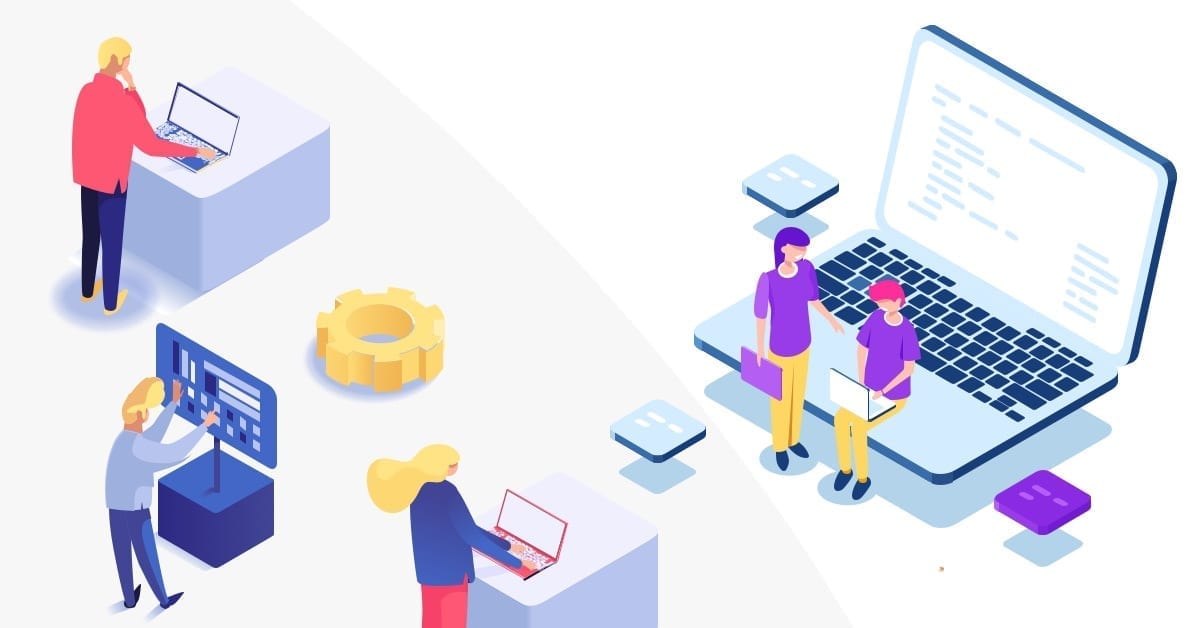A learning organization is a concept developed by Peter Senge, an organizational theorist and author of “The Fifth Discipline.” It refers to an organization that values and promotes continuous learning and improvement among its members. In a learning organization, individuals and teams are encouraged to acquire new knowledge, develop skills, and enhance their abilities to adapt to a rapidly changing environment.
The core idea behind a learning organization is that learning is not just an individual endeavor but a collective one that involves the entire organization. It recognizes that the ability to learn, unlearn, and relearn is crucial for staying competitive and thriving in today’s dynamic business landscape. Some key characteristics of a learning organization include:
Shared Vision
A learning organization has a shared vision that provides a sense of direction and purpose to all members. This shared vision acts as a unifying force and aligns individual efforts toward common goals.
Systems Thinking
It emphasizes systems thinking, which involves understanding the interdependencies and interconnectedness of various parts of the organization. It encourages individuals to look beyond their specific roles and consider the broader implications of their actions. This concept is aligned with the work of Donald Schön, who highlighted the role of reflection-in-action and reflection-on-action in driving organizational learning and adaptation.
Personal Mastery
Individual growth and development are valued in a learning organization. Personal mastery involves individuals continuously improving their skills and expanding their knowledge to achieve their full potential.
Mental Models
A learning organization challenges existing mental models and encourages individuals to question assumptions and beliefs. It promotes a culture of open dialogue and constructive feedback, enabling people to learn from each other’s perspectives. This idea aligns with the work of Chris Argyris, who explored the concept of double-loop learning and the need to challenge deep-seated beliefs and assumptions.
Team Learning
Collaboration and team learning are emphasized in a learning organization. It encourages individuals to work together, share their knowledge, and collectively solve problems. It fosters an environment where teams can learn and innovate together.
Learning Infrastructure
A learning organization invests in creating a supportive learning infrastructure. This includes providing resources, tools, training programs, and platforms for knowledge sharing and collaboration. It also involves creating feedback mechanisms and performance evaluation processes that encourage continuous learning. This idea is in line with the work of Arie de Geus, who emphasized the importance of creating a culture that supports experimentation and knowledge sharing.
Who is Using It?
The concept of a learning organization remains highly relevant in today’s rapidly changing and competitive business environment. In fact, the need for organizations to be learning organizations has arguably become even more critical.
The concept of a learning organization is still relevant for several reasons:
Adaptability
Learning organizations are better equipped to adapt to rapid changes in the business environment, positioning them for long-term success.
Innovation
A culture of learning fosters innovation, as employees are encouraged to explore new ideas and experiment with different approaches.
Talent Development
Learning organizations attract and retain top talent by providing opportunities for growth and personal development.
Resilience
Learning organizations build resilience by learning from failures, embracing change, and quickly recovering from setbacks.
Many companies have embraced the concept of a learning organization to varying degrees:
Toyota
Toyota is known for its commitment to continuous improvement and learning. The company’s philosophy of “Kaizen” which means continuous improvement, is deeply ingrained in its culture. Toyota encourages employees at all levels to contribute ideas, identify problems, and participate in problem-solving initiatives.
Google places a strong emphasis on a culture of learning and innovation. Employees are encouraged to spend a significant portion of their time on personal development projects, and the company provides numerous learning resources, such as internal training programs and knowledge-sharing platforms. Google’s “20% time” policy, where employees can spend a portion of their workweek on passion projects, is an example of fostering personal mastery and innovation.
General Electric (GE)
GE has been recognized as a learning organization, particularly during the tenure of its former CEO, Jack Welch. Welch emphasized the importance of continuous learning and encouraged employees to seek out new skills and knowledge. GE implemented various initiatives, such as the Work-Out program, which aimed to empower employees to identify and solve problems within the organization.
Microsoft
Microsoft has a strong learning culture, characterized by its growth mindset philosophy. The company encourages employees to embrace challenges, learn from failures, and continually develop their skills. Microsoft provides a wide range of learning and development opportunities, including internal training programs, mentorship initiatives, and access to online learning resources.
Are You in a Learning Organization?
To determine if your company has adopted the principles of a learning organization, you can look for certain signs and characteristics within the organization. Here are some indicators that suggest your company is embracing the concept of a learning organization:
Support for Continuous Learning
The organization invests in learning and development initiatives, such as training programs, workshops, conferences, or access to online learning resources. It demonstrates a commitment to fostering the growth and development of its employees.
Learning Opportunities
The company provides opportunities for employees to learn from one another through knowledge-sharing platforms, mentorship programs, or cross-functional projects. There is a culture of collaboration and open dialogue, where individuals are encouraged to share their knowledge and insights.
Innovation and Experimentation
The organization values innovation and encourages employees to experiment and take calculated risks. It provides space for creative thinking and supports initiatives that encourage new ideas, prototypes, and iterative approaches.
Learning as a Performance Indicator
The organization recognizes and rewards individuals or teams based on their learning achievements and the application of new knowledge. Learning outcomes and growth are considered important factors in performance evaluations and career progression
Reflection and Feedback
The organization promotes a culture of reflection and feedback, where individuals are encouraged to reflect on their experiences, learn from successes and failures, and provide constructive feedback to one another. Regular feedback loops are established to facilitate continuous improvement.
Emphasis on Collaboration
The organization values teamwork and collaboration, encouraging employees to work together on projects and share their expertise. Cross-functional collaboration is encouraged to promote diverse perspectives and knowledge exchange.
Adaptability to Change
The organization demonstrates an ability to adapt and respond to changes in the industry or market. It encourages employees to embrace change, be proactive in seeking new knowledge and skills, and encourage a mindset of agility and resilience.
Supportive Leadership
Leaders within the organization actively promote and embody a learning mindset. They lead by example, encourage learning opportunities, and create a safe environment for experimentation and growth. They also actively participate in learning initiatives and provide support and resources for employee development.
If you observe several of these indicators in your company, it suggests that your organization values continuous learning and is on the path toward becoming a learning organization.
Where are We?
One of Mitrais’s core corporate values is competence in our work. To uphold this value, Mitrais has implemented a policy called Corporate Days, which is applicable to most Mitrais Engineers. Corporate Days allow engineers to spend a designated amount of time away from client work. Mitrais Engineers have the option to use this time to learn new technologies or engage in activities like creating a corporate blog similar to this blog.
Additionally, Mitrais has established a specialized department called the Competency Development Center (CDC). Within the CDC, engineers have access to specific learning opportunities and can collaborate on small projects together. This enables continuous development and growth for engineers in a supportive environment. These are the examples of initiatives in Mitrais to move toward a Learning Organization.
Lastly, Mitrais continues to further innovation by holding our annual event, Innovathon. This dynamic hackathon brings together the brightest minds within our company to collaborate, ideate, and bring their innovative visions to life. From coding marathons to problem-solving showcases, Innovathon is the breeding ground for groundbreaking solutions that drive our company and industry forward.
Wrap Up
Becoming a learning organization is a journey that requires commitment, leadership support, and a culture that values continuous learning. By embracing the principles of a learning organization, companies can unlock the power of collective knowledge, adapt to change, and stay ahead in today’s dynamic business landscape.
Author: Kustian, Mitrais Technology Evangelist











